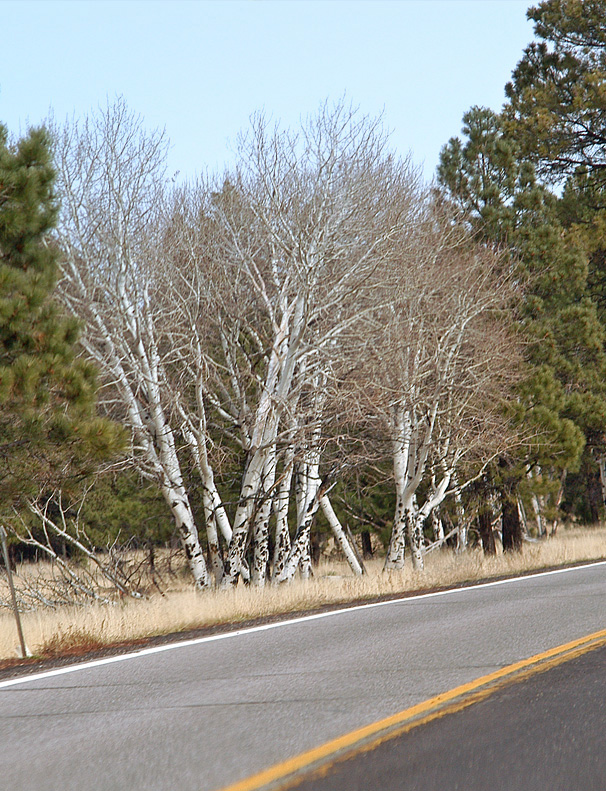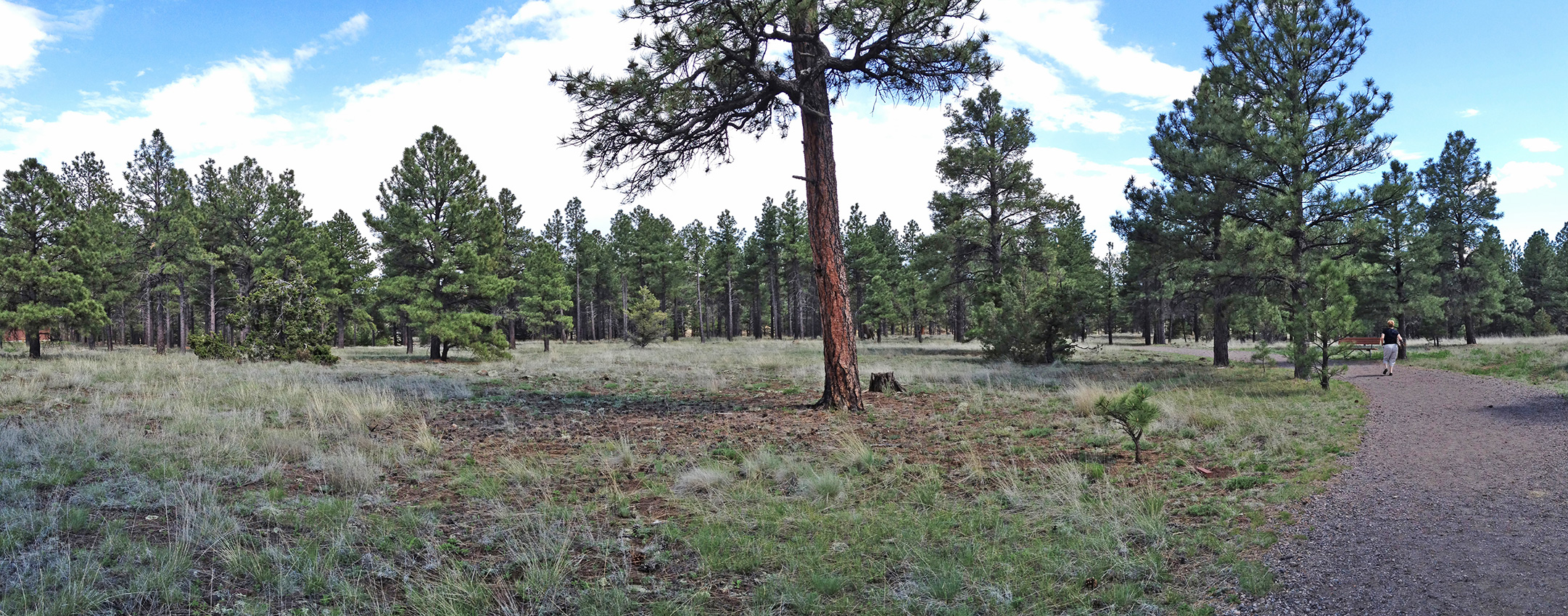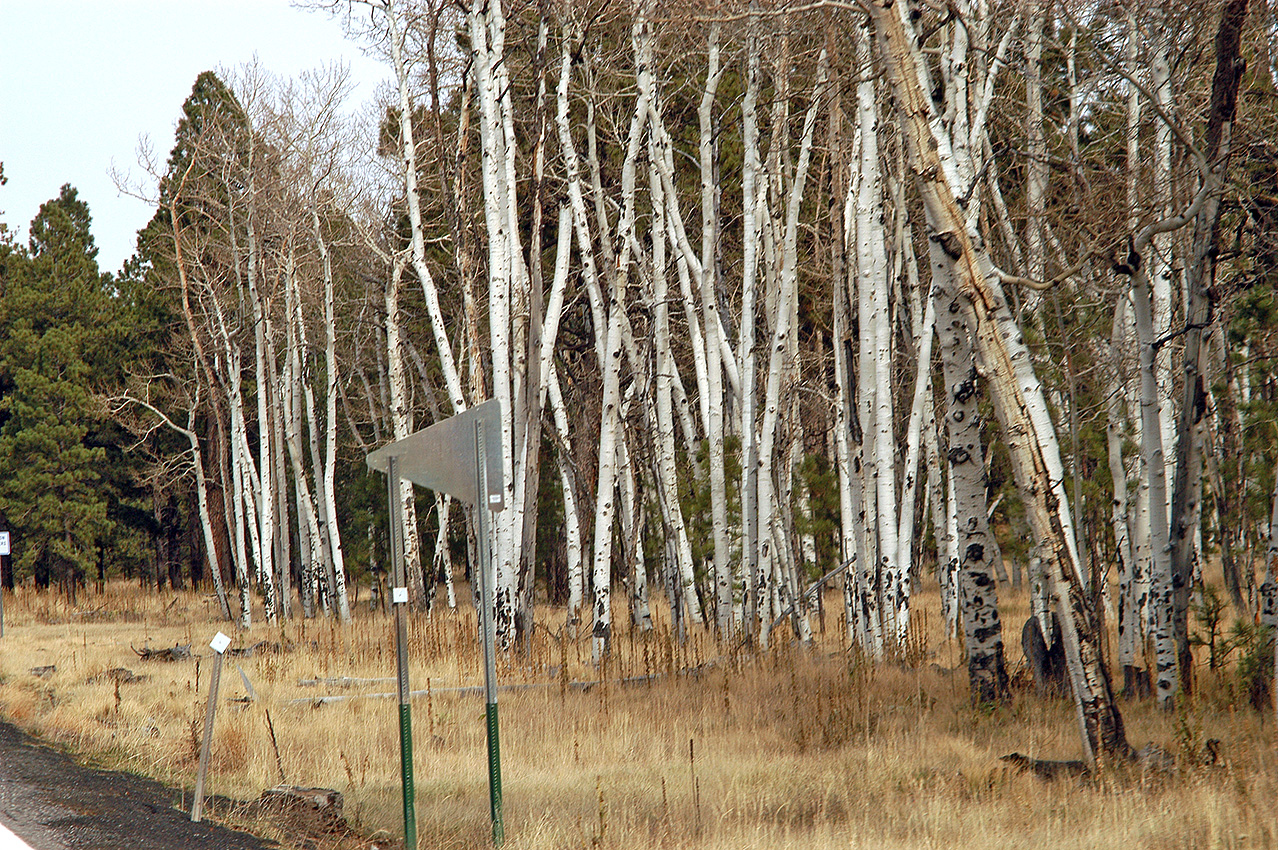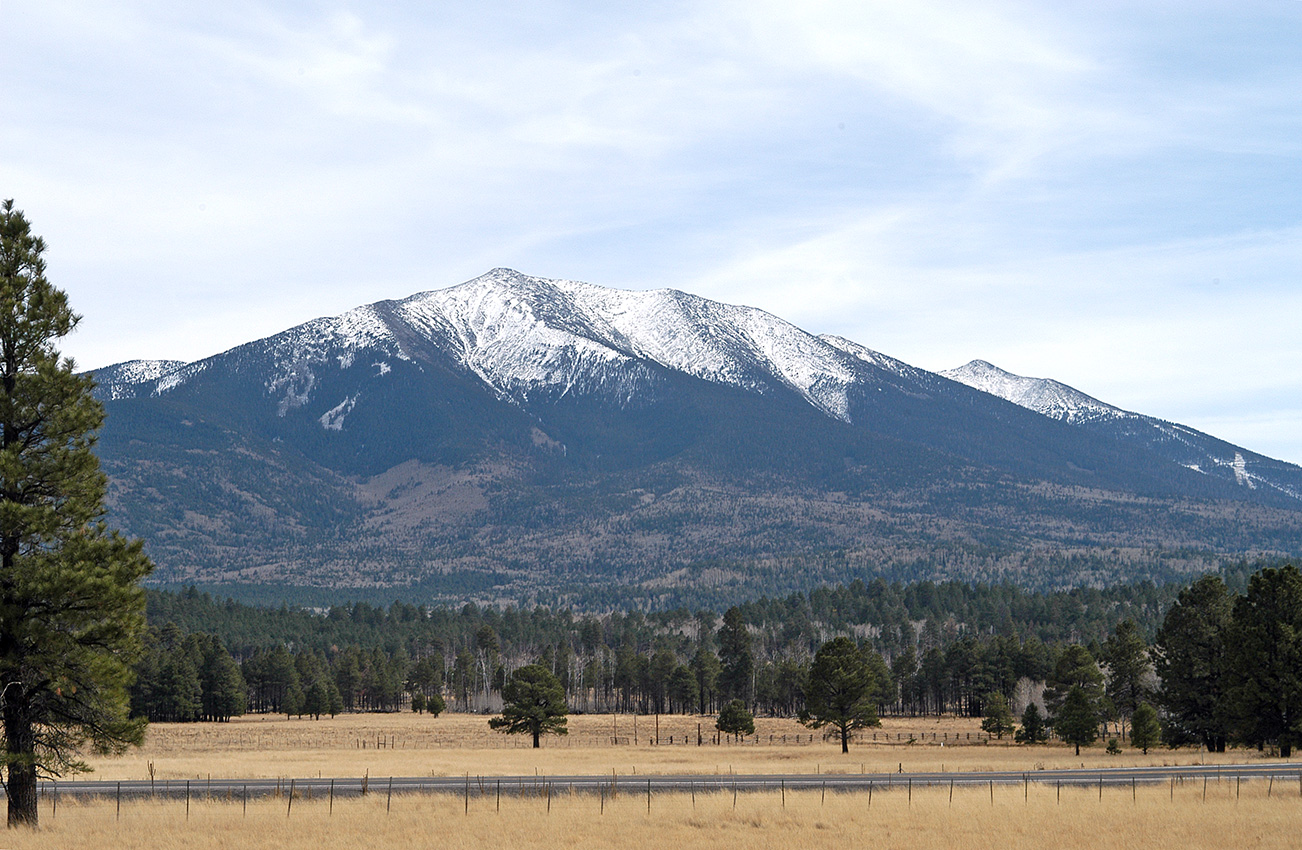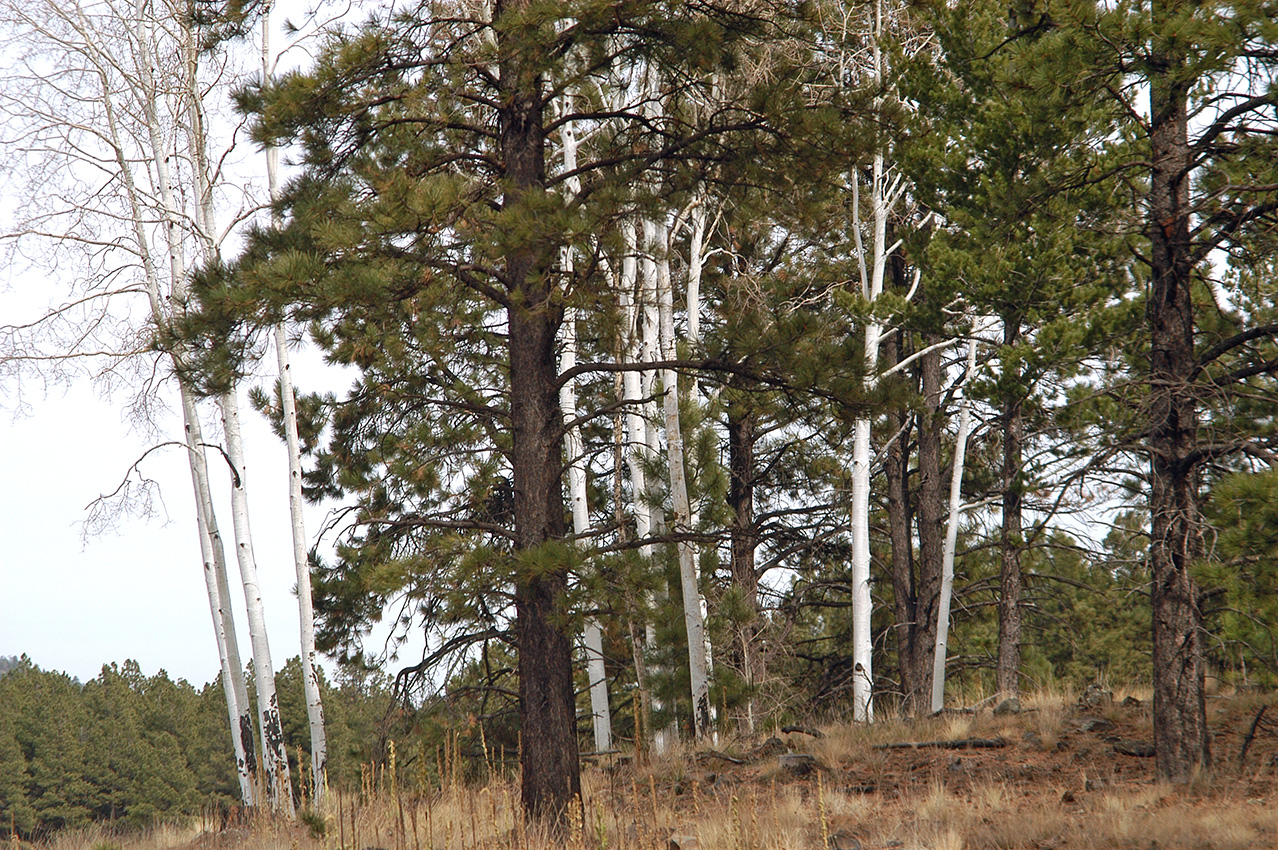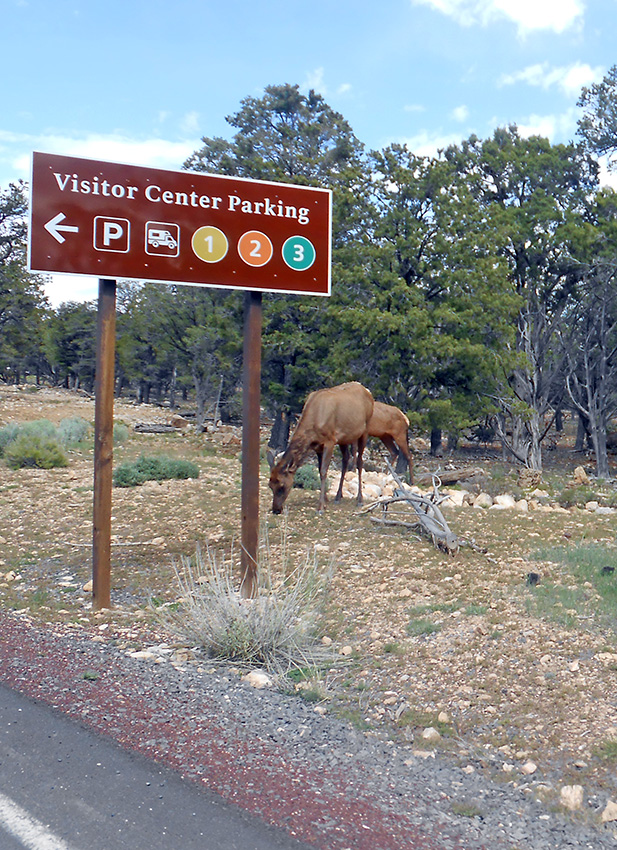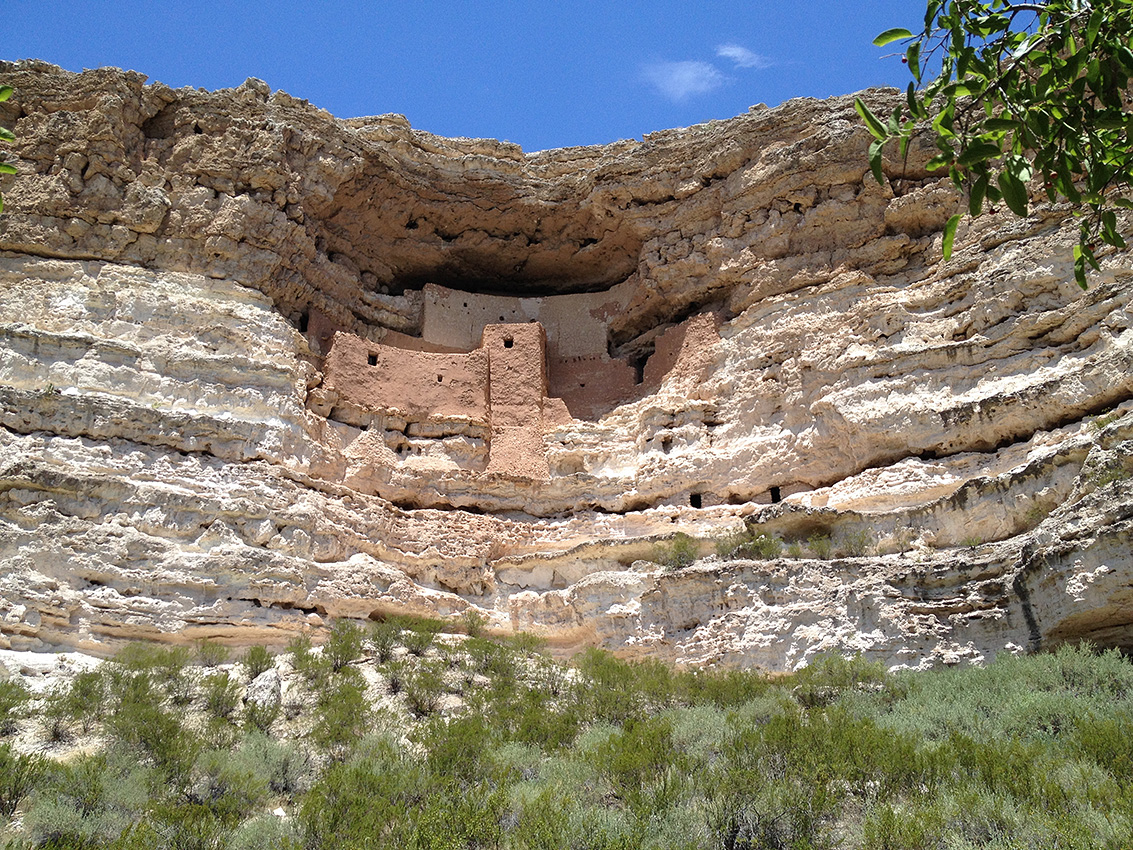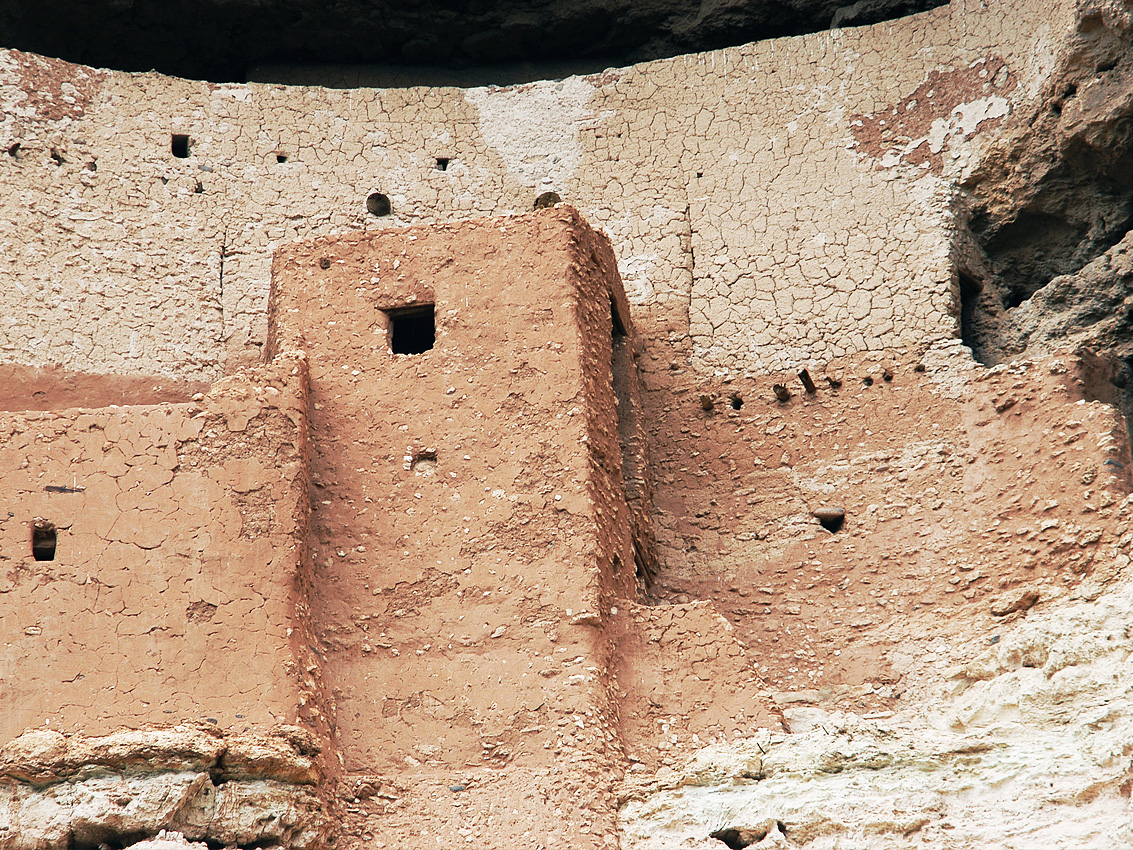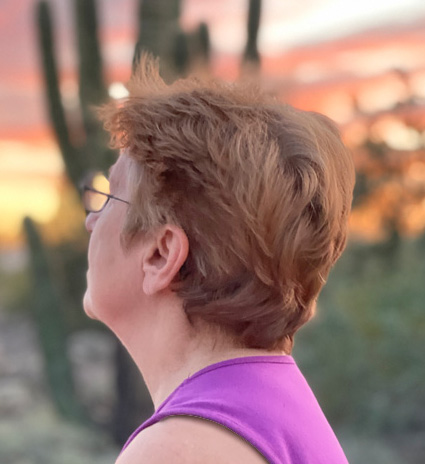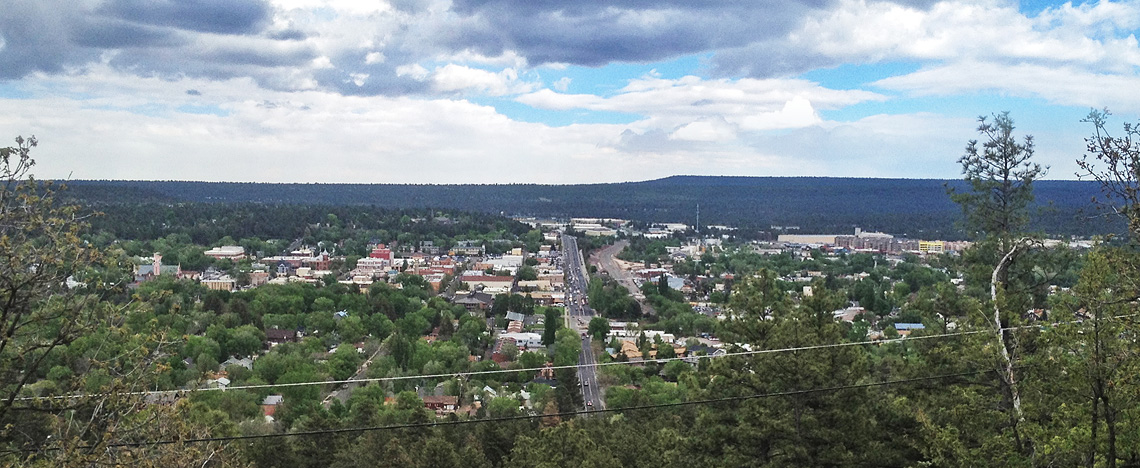
Flagstaff
Let me tell you how we visited the Grand Canyon. Even before my arrival, the children booked a hotel in Flagstaff for May 28, for three days.
Trip to Flagstaff.
Flagstaff is a city in northern Arizona near the Grand Canyon. This is one of the major cities in Arizona, which has its own university (there are three major universities in Arizona: in Phoenix, Flagstaff and Tucson). Although, by our standards, the city is small, about 66 thousand people. It is located on a hill and the climate there is much cooler than in Phoenix. In winter there is a lot of snow and there is a ski resort. Even in this summertime, a mountain with a snow-covered peak was visible not far from the city. We drove to Flagstaff for two hours. Already halfway through the forest began, which is part of the national reserve. At first it was funny to look at — some stunted bushes, but the sign said that we were entering the National Forest. Then pine trees appeared, and as we approached the city, the pine trees became taller and more luxurious. Our hotel was at the entrance to the city right on the edge of a pine forest. The room was quite spacious, overlooking the pool and jacuzzi.
In the evening we decided to visit the observatory located in Flagstaff. This is one of the oldest observatories in the United States, opened in 1894 and named after its founder, Perceval Lowell. Pluto was discovered in this observatory in 1930, and Pluto’s moon Charon was discovered in 1978. In order not to interfere with the work of the observatory, special lights are used in Flagstaff and the city is recognized as a “dark sky” city. In the area ofthe observatory, the lightss are very low, closed at the top, their light is yellow and directed downwards. There we listened to lectures, of course, in English. I understood only certain words, the children translated something for me, but I was still interested, and this trip inspired me to read something on the Internet.
I would like to wander around the territory longer, but it was difficult to do it with my grandson, and even then he did well withstood our journey. And when we were about to leave, a program for the little ones began at the observatory, and there they were shown various physical experiments, which were called tricks. The grandson became very animated, asked some questions, answered something himself, in a word, his mood rose sharply, and when he was bought glasses that refract light in the gift shop and decompose it into a spectrum, he was just happy.
The next day, in the morning we had a trip to the Grand Canyon.
Grand Canyon
In the morning we went to the Grand Canyon. The road ran along the same national forest with huge pine trees. We drove from Flagstaff for two hours. On the way, we met a lot of cars with trailers — whole huge motor homes, which have a kitchen, a bedroom, a toilet. This is how people travel without hotels. We passed a lot of campsites for such cars. Before entering the Grand Canyon, there is even a small airport for small tourist planes.
The entrance to the territory of the canyon was a line of four checkpoints, through each of which a stream of cars moved, and drivers bought entrance tickets on the go. The ticket cost $25 per car but was valid for seven days. Those. those staying near the canyon can visit the territory of the canyon for a week with these tickets, but even this week is not enough to see the entire canyon, because its length reaches 446 km.
According to all kinds of westerns, I imagined the canyon in the form of some kind of plateau cut by the canyon, and we drove into a park with huge firs, pines, firs. Barely found a parking spot. Further along the territory of the park, free buses ran along the canyon, the canyon itself was not visible. We drove the bus several stops, got off at one of them, walked a little behind the hotels located along the bus, and I was simply stunned by the view that opened before my eyes. Before us was an abyss with heaps of rocks in the form of palaces and pagodas of all kinds of colors and shades, from coffee to light pink. In a word, it cannot be conveyed and described, even the camera does not convey this beauty.
The observation platforms are fenced with protective barriers, but in some places these barriers are absent, and it is very scary to approach the edge. The depth of the canyon is about two kilometers, below you can see hiking trails, some houses. In general, the Colorado River flows at the bottom of the canyon, but it is not visible everywhere. The Grand Canyon has a sea of tourists and a land of wild animals. The squirrels go straight to the café where people eat ice cream, and when they were riding the bus, they saw deer grazing right along the road.
We really enjoyed our visit, it’s a pity that you can’t see everything in one day. Well, nonetheless, we decided that there would be a reason to visit the canyon more than once, but in another place.
In the evening in Flagstaff, my childrens friends and I visited the restaurant and swam in the pool and jacuzzi. Friends just these days were swimming competitions with their children, and we stayed at the same hotel with them. Even in our hotel these days there were some veteran marines. The men sat all evening by the pool, swimming, sipping wine from plastic cups and talking. Glassware is not allowed near the pools.
The next day, on the way back, we stopped at the Montezuma Castle. The castle is not related to the historical character Montezuma, but it is a national monument of the United States. It is difficult to call it a castle, it is a structure in the rock, neither clay nor brick. There was also a small museum, which displays household items and clothing of the ancient Native Americans. Near the castle there was a small lake in which the ancient Native Americans fished.



